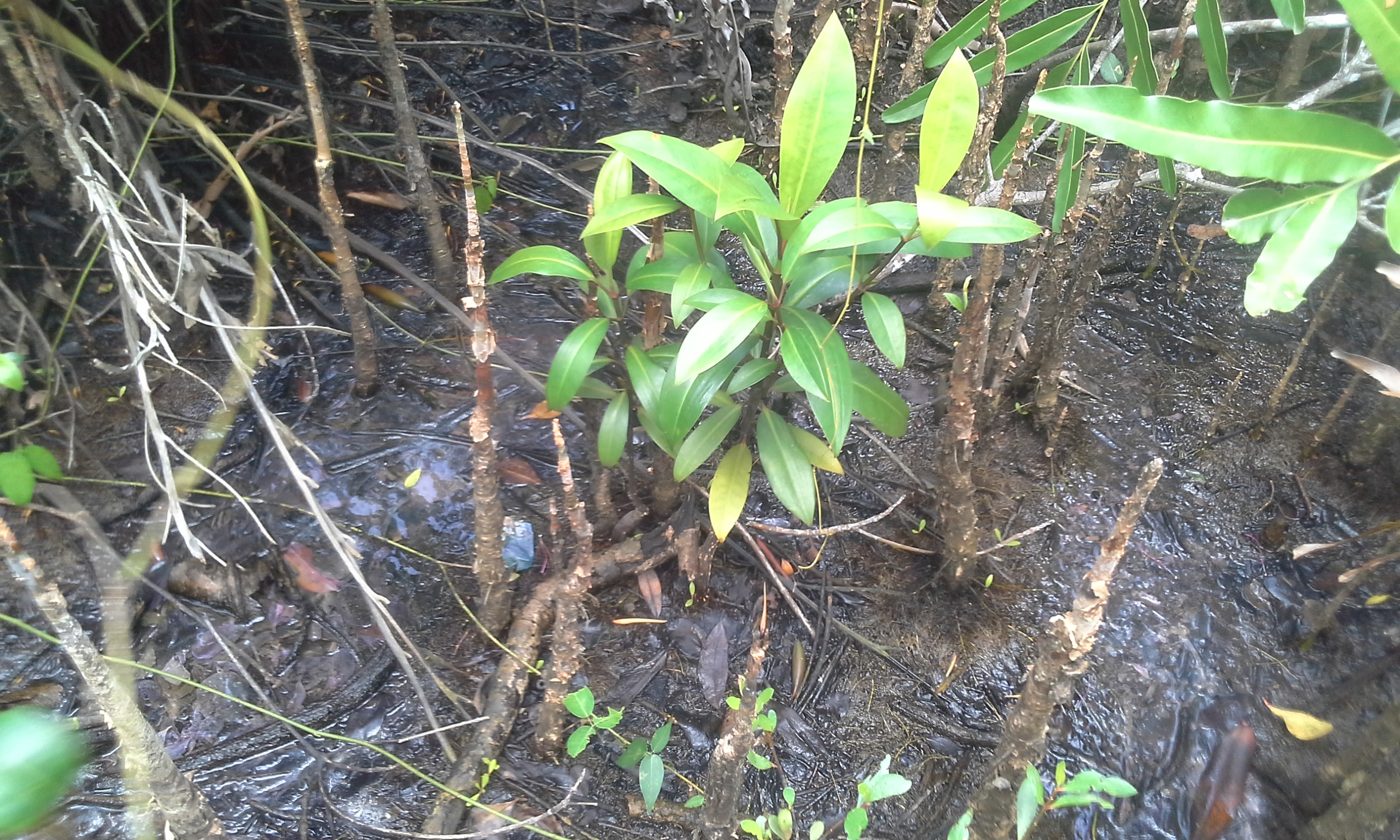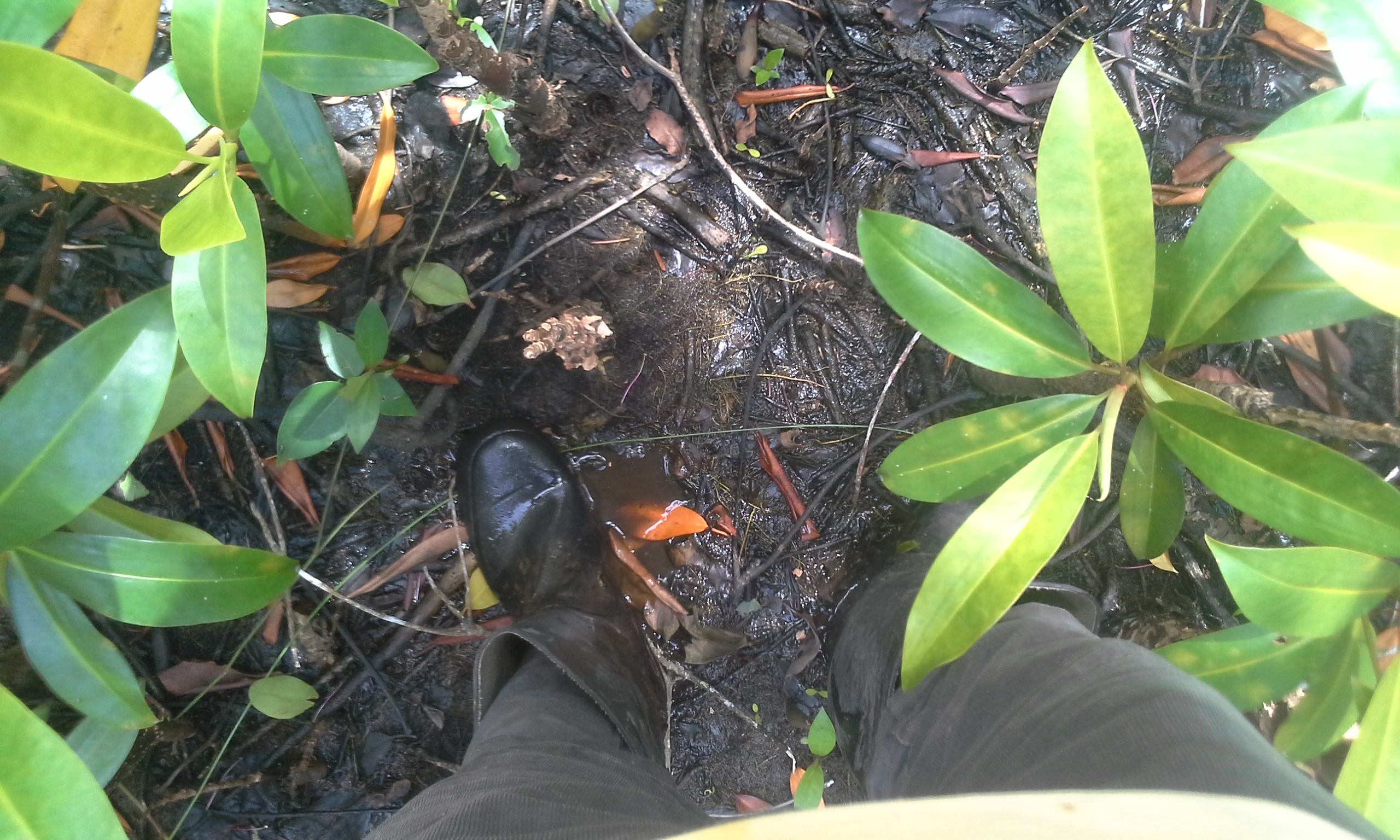Mangroves are considered as one of the most important plant communities in the world. This salt tolerable plant ecosystems are most abundant in sheltered lagoons, bays and estuaries in Sri Lanka as the form of trees or shrubs that are well adapted to the harsh coastal environment. The unique characteristics of these plants play a major role in conquering the anaerobic and high salinity environment successfully.
Mangroves Ecosystem Distribution
Sri Lanka is an island of 65,610 square kilometers in the tropical region and is surrounded by a significant mangrove ecosystem in the coastal area. The mangrove environments are commercially and ecologically important to the peoples as well as the animal community. It is an important part of the mangrove environment, providing habitat for fish and aquatic life forms, depositing sediments and maintaining coastal food chains.

Mangroves in Southern Coastal Area (Koggala Lagoon)
The tidal range in Sri Lanka is about 75 cm and the tidal range affects the mangrove distribution. True Mangroves are found in most of areas of Sri Lanka, However the distribution somewhat higher in Jaffna, Wadamarchchi, Thondaimanar lagoons (northern coast) Kokkilai, Navarau, lagoons, Trinkomalee, Kathiraveli, Valaichcenai, Batticaloa, Pothuvil (astern coast) Weligama, Gintota (southern coast) Balapitiya, Bentota, Nogambo and Chillaw lagoons, Puttalam lagoon, and Mannar (western and northwestern coasts). According to environmental reports of 2010 year, mangroves cover an area of about 15,670 hectares in Sri Lanka.
Following are some of the major mangrove species that have become widespread in Sri Lanka per the research conducted in the country
Avicennia marina (Family: Avicenniaceae),
Rhizophora mucornata,
Rhizophora apiculata,
Bruguiera gymnorhiza,
B.sexangula (Family: Rhizophoraceae),
Excoecaria agallocha (Family: Euphorbiaceae),
Sonneratia caseolaris, (Family: Sonneratiaceae)
Aegiceras corniculatum, (Family: Myrsinaceae) and
Lumnitzera racemosa (Family: Combretaceae)
Furthermore Nipa fruticans (Family: Palmae), Xylocarpus granatum (Family: Meliaceae) Several such species have spread to several areas in the Western and Southern Provinces. Lumnitzera littoria (Family: Combretaceae) species is restricted only in the several places in Madhu river basin.

Overview of mangrove distribution in coastal areas in Sri Lanka. There is a significant high mangrove distribution in the green colored areas (Source: Edirisinghe et al., 2010)
Economic Value of Mangrove Ecosystems
The benefits of R. apiculata, and C. tagal mangroves include the supply of wood for home repair and fishing gear, as well as leather-based pigments. Avicennia spp also feeds on animal husbandry. Although not very popular in Sri Lanka, N. fruticans palm, sugar, alcohol and vinegar are widely produced in some countries such as Malaysia. Mangrove (Lurnnitzera, and Rhizophora sp.) Twigs are widely used to make equipment for lagoon fishing. The fruit of the Sonneratia caseolaris plant is used in the production of nutritious food and beverages.
 Nutrient Rich, saline, anoxic, acidic and frequently waterlogged soil composition of mangrove forest
Nutrient Rich, saline, anoxic, acidic and frequently waterlogged soil composition of mangrove forest
Environmental value of Mangrove Ecosystems
Mangroves maintain the diet of the coastal environment and provide food for living organisms. Many species of animals can be found in this environment, including crustaceans, insects, and mollusks. It also provides food and shelter for large birds and mammals. These plants also help to control the physical activity of the environment. It is acting as a barrier to prevent the coastal erosion by ocean water.
Here the roots of the mangroves create a surface for sediment deposition. Areas with mangroves provide protection for aquatic life for reproduction and nursery for the juvenile stage. Species such as shrimp are often dependent on this environment. Mangrove roots help small creatures to escape from predators.
Referance
Mangroves of Sri Lanka
Publication of Seacology-Sudeesa Mangrove Museum https://www.seacology.org 1(1) 2017: 25-28
K.B. Ranawana
Department of Zoology, University of Peradeniya, Peradeniya, Sri Lanka